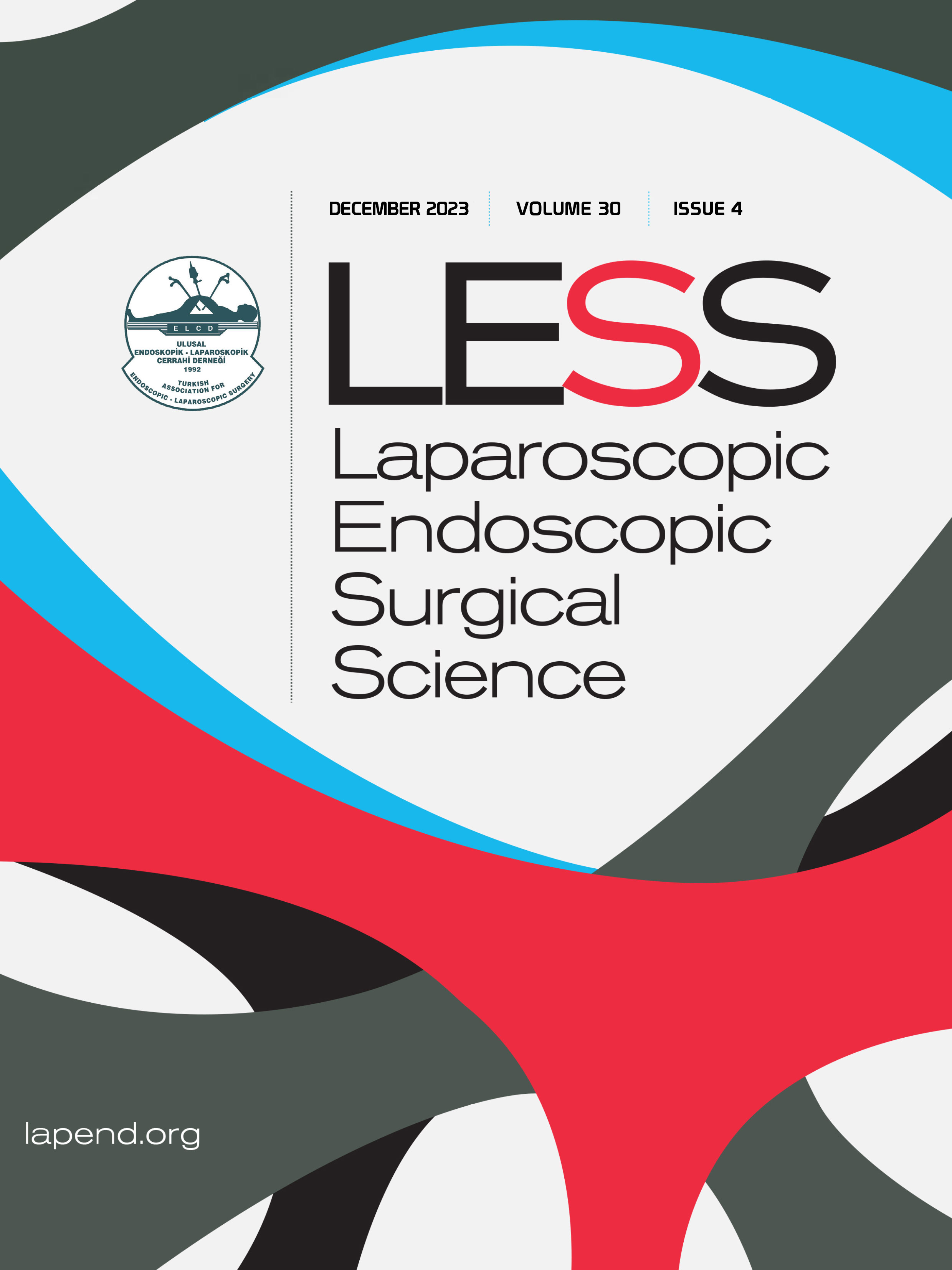Post-ERCP complications, risk factors and management of complications
Ufuk Arslan1, Hacı Murat Cayci2, Gözde Doğan3, Umut Eren Erdogdu4, Ali Tardu5, Direnç Yiğit1, Yurdakul Deniz Firat4, Müfit Şansal11Department of Gastroenterological Surgery, Bursa State Hospital, Bursa, Turkey2Department of Gastroenterological Surgery, Private Medical Office, Bursa, Turkey
3Department of General Surgery, Doruk Hospital, Bursa, Turkey
4Department of General Surgery, Bursa Yüksek İhtisas Training and Research Hospital, Bursa, Turkey
5Department of Gastroenterological Surgery, Irmed Hospital, Tekirdağ, Turkey
INTRODUCTION: Endoscopic retrograde cholangiopancreatography (ERCP) is an interventional procedure used for the diagnosis and treatment of hepatopancreaticobiliary system diseases. The aim of this study is to evaluate post-ERCP complications, risk factors, and management of complications of ERCP procedures performed in the endoscopy unit of our hospital.
METHODS: The study retrospectively reviewed 765 patients data of ERCP performed by the same endoscopist for the diagnosis and treatment of hepatopancreaticobiliary diseases at a single center between April 2019 and February 2021. Interventional procedures were reviewed in terms of ERCP indications, procedure-related complications, risk factors for complications, and management of the complications.
RESULTS: A total of 765 procedures were carried out. The successful cannulation rate was 91.9%. The most common indicators for the ERCP procedure were choledocholithiasis (43.6%), high levels of cholestasis biomarkers/ intra-extrahepatic bile duct dilatation (19%) ve removal of bile duct stents (12.5%). The most common risk factors were; female gender (60.9%) and younger age (42.3%) for post-ERCP pancreatitis, pre-cut (10.9%) and anticoagulant therapy (7.5%) for bleeding, papillary abnormalities (22.4%) for perforation, and older age (42.8%) for cholangitis. The most common complications were hyperamylasemia and pancreatitis (17.2%), bleeding (2%), cholangitis (1.83), and perforation (0.65%). Mortality occurred in 0.26% of patients due to post-ERCP cholangitis.
DISCUSSION AND CONCLUSION: Understanding the risk factors and early diagnosis and treatment of complications are the ways to reduce morbidity and mortality in the management of post-ERCP complications.
ERCP sonrası komplikasyonlar, risk faktörleri ve komplikasyonların yönetimi
Ufuk Arslan1, Hacı Murat Cayci2, Gözde Doğan3, Umut Eren Erdogdu4, Ali Tardu5, Direnç Yiğit1, Yurdakul Deniz Firat4, Müfit Şansal11Bursa Şehir Hastanesi, Gastroenteroloji Cerrahisi, Bursa2Özel Muayenehane, Gastroenteroloji Cerrahisi, Bursa
3Doruk Hastanesi, Genel Cerrahi, Bursa
4Bursa Yüksek İhtisas Eğitim ve Araştırma Hastanesi, Genel Cerrahi, Bursa
5Irmed Hastanesi, Gastroenteroloji Cerrahisi, Tekirdag
GİRİŞ ve AMAÇ: Endoskopik retrograd kolanjio pankreatografi (ERCP), hepatopankreatikobiliyer sistem hastalıklarının tanı ve tedavisinde kullanılan girişimsel bir yöntemdir. Bu çalışmanın amacı hastanemiz endoskopi ünitesinde uygulanan ERCP işlemleri sonrası görülen komplikasyonlar, risk faktörleri ve komplikasyon yönetiminin değerlendirilmesidir.
YÖNTEM ve GEREÇLER: Nisan 2019- Şubat 2021 tarihleri arasında tek merkezde hepatopankreatikobiliyer sistem hastalıklarında tanı ve tedavi amacıyla aynı endoskopist tarafından uygulanan 765 hastanın ERCP verileri retrospektif incelendi. İşlemler; ERCP endikasyonları, işleme bağlı komplikasyonlar, komplikasyonlar için risk faktörleri ve komplikasyonların yönetimi açısından değerlendirildi.
BULGULAR: Yapılan işlem sayısı 765 idi. Başarılı kanulasyon oranı % 91.9 olarak bulundu. ERCP işlemi için en sık endikasyonlar koledok taşı (%43.6), yükselmiş kolestaz enzimleri/ intra-ekstrahepatik safra yolu dilatasyonu (%19) ve stent çıkarılması (%12.5) idi. Post-Ercp pankreatit için en sık izlenen risk faktörleri kadın cinsiyet (%60.9) ve yaş (%42.3), kanama için pre-cut (%10.9) ve antikoagulan kullanımı (%7.5), perforasyon için anormal papilla (%22.4), kolanjit için yaş (%42.8) idi. En sık izlenen komplikasyonlar hiperamilazemi ve pankreatit (% 17.2), kanama (%2), kolanjit (% 1.83) ve perforasyon (% 0.65) olarak izlendi. Post ERCP kolanjitine bağlı % 0.26 hastada mortalite izlendi.
TARTIŞMA ve SONUÇ: ERCP sonrası komplikasyon yönetiminde risk faktörlerinin iyi anlaşılması, komplikasyonların erken tanı ve tedavisi ile morbidite ve mortalitenin azalabileceğini düşünmekteyiz.
Corresponding Author: Ufuk Arslan, Türkiye
Manuscript Language: English












